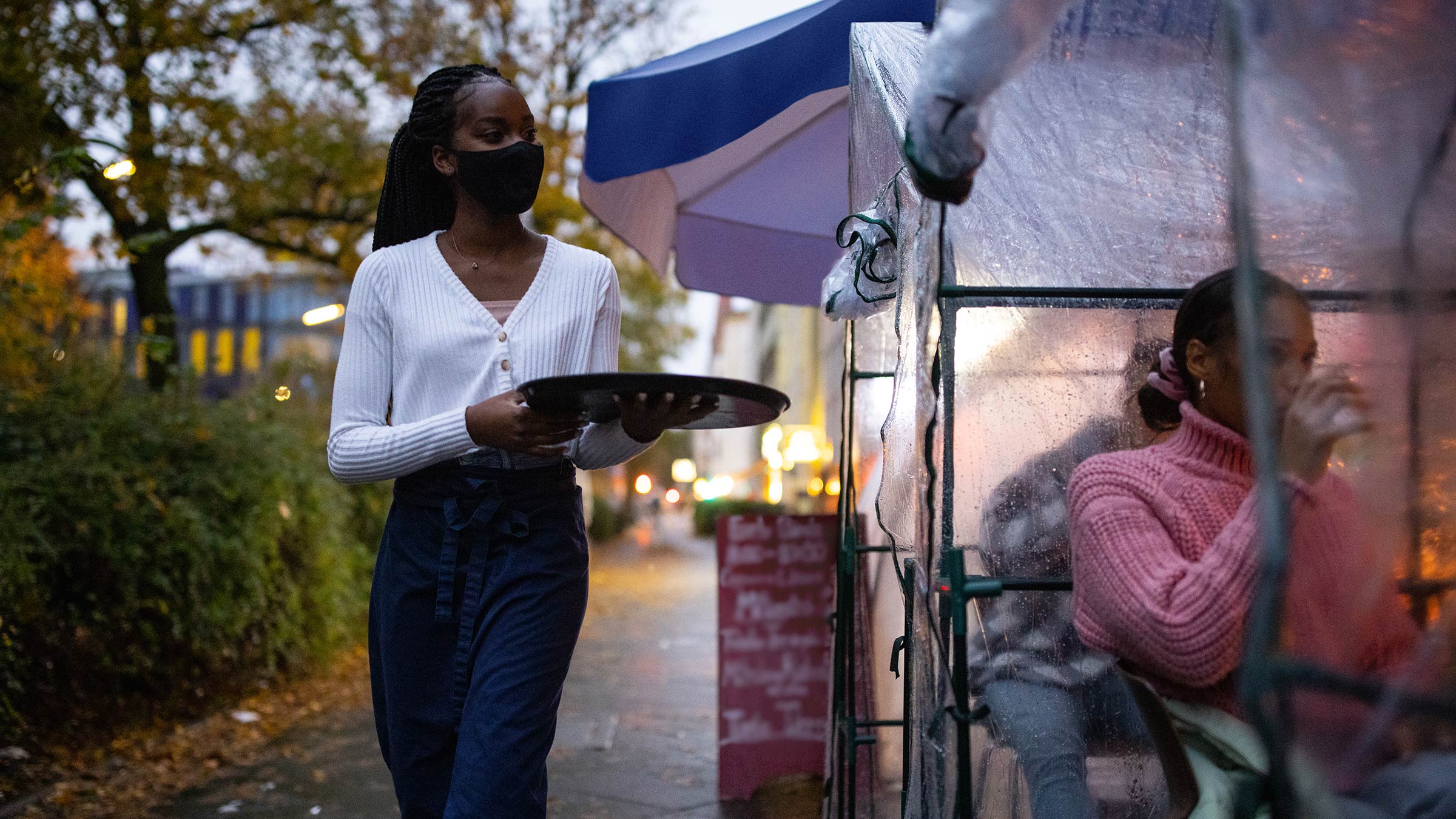Early in the COVID-19 pandemic, North Dakota’s economy shrank faster and by a greater percentage than in the Great Depression, and a full recovery from the recession remains many months away, Gov. Doug Burgum said recently.
But he could already see light at the end of the tunnel, he told a virtual audience of almost 400 at the Minneapolis Fed’s annual Regional Economic Conditions Conference on Jan. 13.
“We have been here before, but it was 102 years ago when the flu epidemic raged through our nation, and what we saw come after that was the roaring ’20s,” he said. “I do have optimism looking forward that there’s going to be some strong economic activity and growth in the decade ahead of us.”
2021 will be different because North Dakota, and the rest of the nation, now has access to public health tools not widely available in 2020, such as more effective treatments for COVID-19, vaccines, and affordable test kits, he said.
The note of optimism topped off a rough year for states in the Federal Reserve’s Ninth District, which conference panelists from each state described as much rougher for some than others. Low-wage and women workers, workers from racial and ethnic minorities, and those in the leisure and hospitality sector, in particular, have suffered from higher unemployment rates.
Underlining the recession’s uneven impact, University of Montana economist Pat Barkey said that while Montana’s economy has shed a significant number of jobs, total wages earned by all workers have not fallen nearly as much.
In fact, the state’s individual income tax collections have increased, he said. “This recession has been more of a jobs recession than a wage recession.”
Hardest hit sectors
Ninth District states broadly followed the same pattern as the rest of the nation in 2020 with an unprecedented spike in unemployment at the start of the pandemic followed by gradual recovery. But the magnitude of job losses was very different among—and even within—different economic sectors.
In Minnesota, hospitality and leisure businesses bled jobs and are still a long way from full recovery. Meanwhile, finance and insurance businesses lost very few jobs and have already rebounded past prepandemic levels, according to Oriane Casale, who runs Minnesota’s Labor Market Information office.
But, as several Ninth District states have reported, hospitality and leisure businesses that are outdoors-oriented, such as campgrounds, thrived as consumers sought out vacations with low COVID-19 risks.
Montana campgrounds and parks were busy this past summer, Barkey said, though spending by tourists was less than in years past.
Besides leisure and hospitality, sectors such as manufacturing, retail, government, oil and gas in North Dakota and Montana, and even health care also suffered significant job losses.
“In Wisconsin, we had hospitals that were reducing services in anticipation of a COVID spike,” said Tessa Conroy, a University of Wisconsin economist. “Some of those spikes didn’t come like we thought, so there was this overall reduction in need for labor.”
Hardest hit workers
Job losses also differed among workers.
Casale reported that racial and ethnic minorities suffered higher unemployment than their share of the labor force suggests. The same is true of women, workers in their 20s to mid-30s, workers older than 65, and less-educated workers.
The disparity for Black workers is especially striking. They make up 6 percent of the labor force but 11 percent of claims for unemployment benefits.
Other panelists also reported similar disparities in their states. In North and South Dakota, many new Americans saw disproportionate job losses.
These disparities appear to overlap significantly, according to panelists.
“We found that women and younger workers are more likely to have been affected by the pandemic layoffs in the [Upper Peninsula], as they command a disproportional share of the leisure and hospitality workforce in the area,” said state labor economist Leonidas Murembya.
This hardest hit sector also requires little education of its workers and pays among the lowest wages, he said.
In Wisconsin, small businesses owned by racial and ethnic minorities are much more likely to be in COVID-19 vulnerable sectors, such as those that include hair salons and housekeeping services, according to Conroy. Around half of small businesses owned by Asians, Blacks, and Hispanics are in vulnerable sectors compared with only 38 percent for non-Hispanic Whites.
A transformed economy
Panelists agreed that vaccination holds the keys to recovery. Consumers are still too scared to dine out or shop as they had before the pandemic, regardless of any easing of government restrictions on public gatherings. Many unemployed workers remain so because jobs available to them carry high risks of COVID-19 or their children’s schooling was disrupted by the pandemic.
“We’re hopeful that once we get that widespread vaccine utilization, we’ll start to reverse some of those trends with parents leaving the workforce and individuals waiting until they feel comfortable coming back to work,” said Mark Quasney, South Dakota’s state economist.
But it’s unlikely that the post-pandemic economy will be the same as the prepandemic economy. Panelists said many changes of the past 10 months are here to stay.
Technologies not widely adopted prepandemic have become much more popular, such as online grocery orders and virtual business meetings. Panelists recognized that some workers suffer when technology reduces labor needs—traditionally, the lowest-paid workers have been the easiest to replace—but they also noted that new technologies can free up resources for growth in other areas, including new kinds of jobs.
Residential patterns are shifting as many big city residents move to less dense areas, taking advantage of employers’ comfort with remote work. If the trend continues post-pandemic, it would benefit places like Montana and South Dakota, which Quasney said is investing in better broadband capacity to take advantage.
It will also take a long time for minorities, women, and other workers hardest hit by the recession to return to where they were prepandemic, when a tight labor market had finally raised wages for many.
Women workers forced to stay home to care for children in the pandemic will likely have a hard time finding work, especially work that pays what they earned prepandemic, Conroy said. “In terms of regaining some of that momentum that we’ve had, I think it might take quite some effort to reincorporate women fully into the labor force.”
“This recession, like every other recession we’ve ever experienced, is bringing out changes, which will be permanent,” Barkey said. “And, unfortunately, in those transitions between pre- and post- there’s going to be people that are going to get hurt.”
Tu-Uyen Tran is the senior writer in the Minneapolis Fed’s Public Affairs department. He specializes in deeply reported, data-driven articles. Before joining the Bank in 2018, Tu-Uyen was an editor and reporter in Fargo, Grand Forks, and Seattle.






